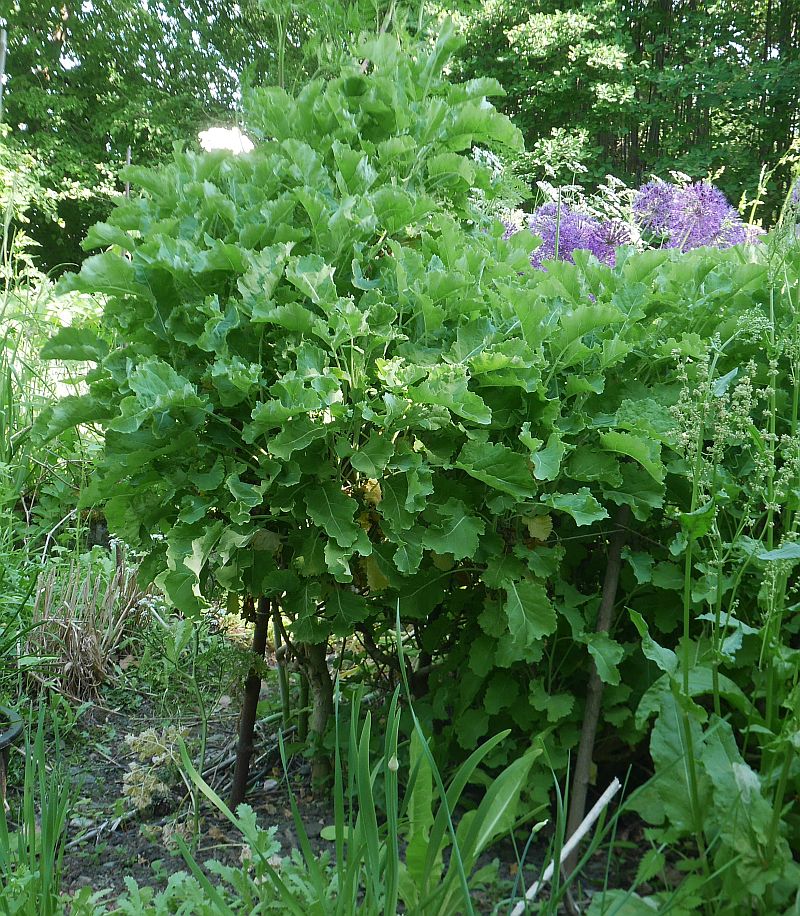I’m more and more convinced that perennial kales are the way forward. After two mild winters I’ve had good overwintering of most varieties except Tree Collards from California.
The film below shows a kale which I call “Walsall Allotments” which I found growing at Walsall Allotments in Birmingham (see https://www.edimentals.com/blog/?page_id=2868) on the allotment of a Kenyan man. I never managed to find out where he got these kale from, but Kenya is the only country was the only country where perennial kales were still grown commercially at the time I was researching my book. At the end of the video we see another perennial Brassicaceae, sea kale (strandkål) Crambe maritima. Note that the variety Lily White flowers significantly earlier than my other varieties.


A few days ago the plague of Brassica growers, diamond back moth (kålmøll) arrived in significant numbers here and I see on various FB groups that folk are using floating mulch and enviromesh to protect their crops. I had done the same for years, but decided that I wanted to grow vegetables without non-sustainable oil based products like Agryl fleece which is no doubt also a major source of plastic fibres in nature. Agryl is also used to bring on annual crops earlier. However, there is an alternative plastic free and sustainable alternative using perennials. As you can see, my kales having grown for two and a half months are large and have been providing kale leaves since early spring. Their main growth period is now over but will be resumed in autumn. Although diamond back moths and other butterflies lay their eggs on these kales damage isn’t significant. Therefore I am totally unworried by this invasion of moths!
Of course there are problems with perennial kales too, such as cold hardiness, deer and woodpigeons (rådyr / ringduer) in the winter and lack of diversity, but breeding projects by amateurs such as Chris Homanics in Oregon are changing all that!

One thought on “Sustainable kales”